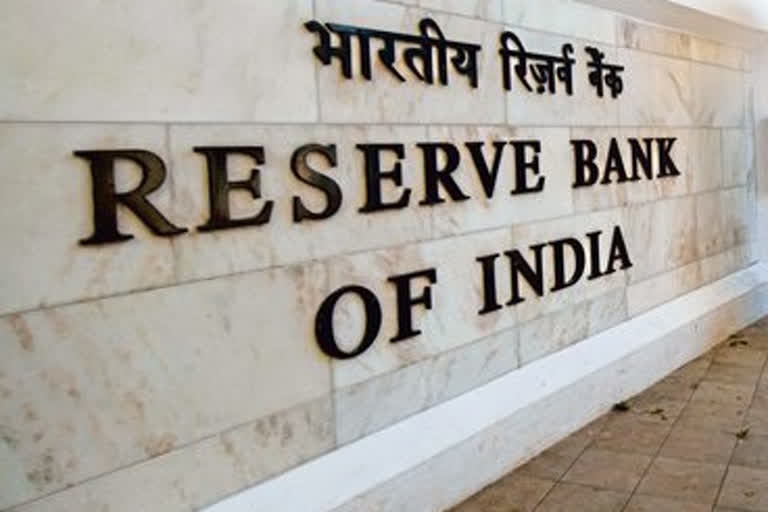New Delhi: Recent headlines on economic news, especially about possible slowdown has gained public attention. In the context of the slowdown, various government and RBI statistics along with the RBI's annual report provide very insights into the state of our economy and its present problems.
We should be happy as the RBI annual report indicates some interesting but important structural changes that are underway in the economy. We should be worried because it indicates that if the government is not careful, the present slowdown could well turn out to be a more serious issue. There is no doubt that there is a growth slowdown in India and the growth slowdown is taking shape rapidly.
This is due to a combination of factors, both internal and external.
The fact that India has never been an export-oriented economy has insulated India till now compared to other exported oriented countries in Asia, Europe or South America. Germany, a predominantly export-oriented economy has witnessed manufacturing decline for the past year: car production and exports of Germany are down 17% in the past year.
But that internal consumption-driven economy has its limitations – which are now coming to the forefront. Unfortunately, they are coming up at a time when the world is also slowing down due to the worsening of trade relations between USA and China.
Structural or Cyclical Slowdown
This invariably leads to the question of whether this slowdown will become more long-term structural slowdown or if it is a passing cyclical and seasonal slowdown.
As of now, the data seems to indicate elements of both – structural and cyclical aggravated by seasonal factors including monsoons and floods.
However, the economic data is simply insufficient to come to a hasty conclusion about the economy other than saying that there is a sharper than normal cyclical and seasonal slowdown.
It is important to note that we will have further clarity only by the end of the forthcoming festival season. If the slowdown persists even at the end of January then it should ring bells all around.
In the meantime, there is a need not to confuse decline in automobile sales with something more drastic. One of the reasons for the slowdown in vehicle production is that the new BS VI emission norms are due for implementation in March 2020.
READ: 4 judges sworn in, SC attains full strength
Hence, we do not know if the manufacturers have stopped production to get rid of the existing inventory apart from the cyclical factors.
Importantly, on an annualised basis, bank credit is still growing, though at a weak pace.
The other important consumption indicators that offer scope for optimism is that of the consumption of petroleum statistics.
The consumption of Diesel (HSD) and Aviation Turbine Fuel (ATF) indicates that as of now the slowdown is seasonal.
ATF consumption in the country (on a metric tonne basis) hit a new high last financial year at about 83.25 lakh metric tonnes while HSD consumption was a record 8.3 crore metric tonnes.
Seasonally, these numbers decline with the onset of monsoon i.e., June-July to October – November every year. This year is no different as far as these two indicators are concerned and there is nothing to panic.
Identifying Problem
The above conclusions lead us to questions about where the problem lies and, why there exists an economic slowdown? The problems are very real and are getting worse day by day.
However, the problems did not start this year but what is surprising is that even the costliest general election did give the economy a boost –which normally happens. The problems started with demonetisation and the badly designed GST and its faulty implementation.
Post these two events (Demonetisation and GST), households and small business which are one of the most important segments of the economy are in deep trouble – a fact that is indicative of the decline in gross household savings from 19.2% of the Gross national disposal income (GNDI) in 2014-15 to a low of 16.9% in 2016-17. It has only recovered marginally to 17% in 2017-18.
Worryingly, financial liabilities of the household sector increased from a low of 2.7% in 2015-16 to 4.3% in 2017-18 of GNDI – a figure that is likely to have only increased.
This increase is seen from the sharp increase in personal loans: from Rs.10.36 lakh crores at the end of March 2014 to Rs. Rs.22.02 lakh crores at the end of June 2019.
Apart from this, households are spending large amounts on various items of conspicuous consumption either in the form of eating in hotels, travelling for holidays, clothes and other items. Invariably, this expenditure is probably more out of a social and psychological urge rather than necessity.
Thus, while debts and unnecessary expenditure has increased, income growth has not kept pace. This exceptional and more than doubling of debts means that households have now reached the limits of their ability to consume. At the same time, the liabilities of the businesses, especially service sector too have increased sharply, though not to the extent of the household sector. Interestingly, the debts of manufacturing sector increased only by about 15% since 2014: from Rs 25.22 lakh crores at the end of March 2014 to Rs 28.58 lakh crores. In contrast, the debts of the service sector increased from Rs 13.27 lakh crores to Rs 24.15 lakh crores from 2014 to 2019.
READ: Petrol price jumps Rs 1.59/ltr, diesel Rs 1.31/ltr after Saudi attacks
It is important to note that the claim that the banks are not lending is only partly true. SBI chairman has recently pointed out that the banks have abundant liquidity despite the problem of NPAs but the banks are being cautious simply because they are worried about further increase in NPAs.
